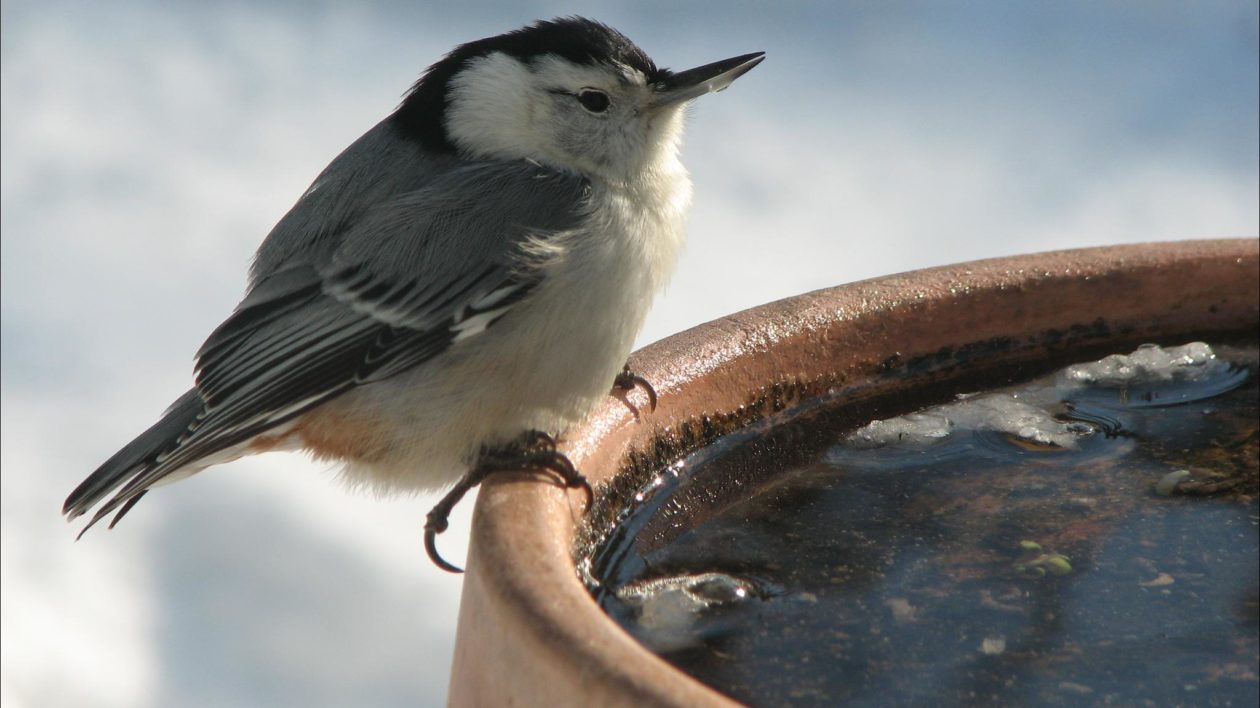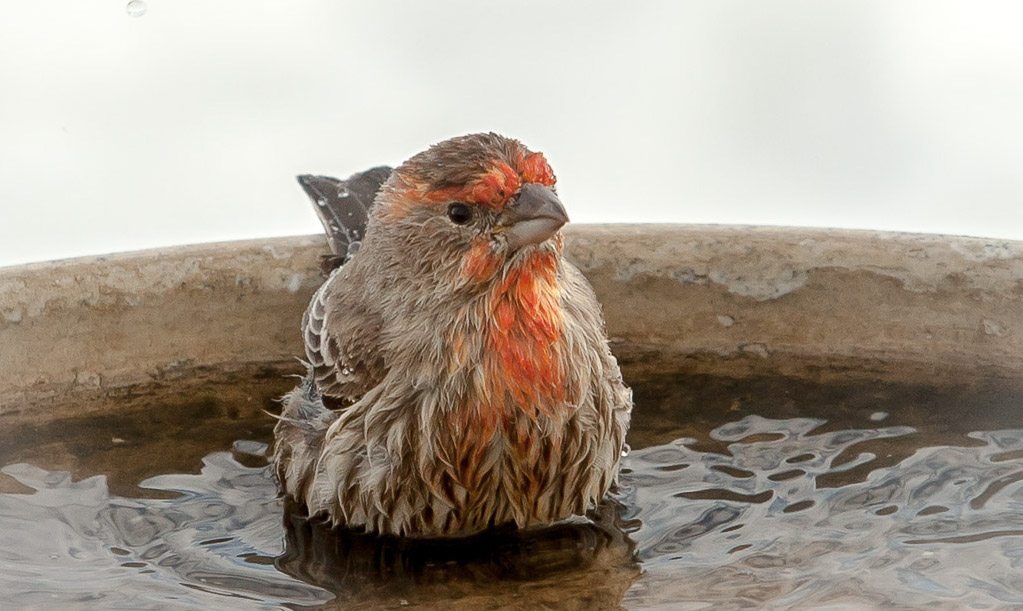Throughout the summer months, we supply birds with water, which they use for drinking, bathing, or simply cooling off.
As winter approaches, we prepare by covering or putting away our birdbaths and other water features, therefore assuming that birds will not need them until next spring.
But this is not the case.
If water is frozen, it will cost birds a lot of body heat to melt. Therefore, what are some other ways birds themselves get water during the winter? Adult birds who primarily feed on seed are able to produce water internally through the process of cellular respiration. Water serves as a by-product, which is the breakdown of carbohydrates, fats, and proteins.
Additionally, adults will consume insects, which contain water. They will also feed insects to their chicks, which allows them to get water as well.
As a last resort, birds can get water from snow; however, melting snow inside the body uses energy. Birds can also get water from dripping icicles. If birds do manage to find a source of unfrozen water, they will gather in large groups and drink.

A Dangerous Winter Bath
According to an article by Pennington, bathing for birds in the winter can be dangerous. Puddles will tend to melt only when the temperature is high enough, and water on feathers won’t freeze before the birds have a chance to shake it off.
Many bird advocates may choose to purchase heated birdbaths, thinking that having water like this available for birds to bathe in is a good thing. However, heated birdbaths should be used a certain way. When birds bathe in a heated birdbath on a frigid day, their feathers may get iced up.
In fact, there are documented records of starlings dropping from the sky seconds after taking off from heated birdbaths, and wet mourning dove tails freezing to branches as the water from a bath freezes. There was even an instance reported in Star Tribune where an avid bird watcher, Tami Vogel, reported recovering six cardinals in her yard “unable to fly because their feathers had frozen and they literally could not extend their wings.”
Instead, being able to modify your heated birdbath so that birds can safely drink, and not bathe, is key.

Safe Ways We Can Provide Water
Fortunately, there are other safe ways we can provide water for birds. Setting an unbreakable shallow bowl of water out, and bringing it in after ice forms, is one way. By setting your bowl out at the same time each day, you can help birds discover it quickly.
Going back to heated birdbaths, if managed properly, we can use these to allow birds to drink from it, and not bathe.
If you choose to use a heated birdbath, suggestions include getting some sort of nonmetallic grille or another efficient way to cover the bath ever so slightly.
Tips from the National Wildlife Federation even suggest that you can place some dark stones (this helps to absorb heat) at the bottom and some sticks on top to encourage perching. The goal is to allow birds enough room to insert their bills for drinking without being able to submerge themselves into the water.
Additionally, if you are using a heater in your birdbath to keep water from freezing, consider adding an immersion-style water heater.
Finally, avoid adding things like glycerin, which acts as antifreeze, to the water. This solution can elevate blood-sugar levels in birds, and can even mat their feathers, causing a decrease in insulation.

A Few More Helpful Tips
Here are a few more helpful tips that will leave your backyard birds fulfilled and enjoying your winter birdbath:
- Be sure you are cleaning your birdbath regularly, even during the winter months.
- To keep your birdbath from freezing, try to place it in a normally sunny area so that the water can last longer as liquid.
- Place your winter birdbath in areas with escape routes, in case birds need to flee from predators. Additionally, be sure that your birdbath is approximately 5 to 10 feet away from any outdoor cat hiding places. Using some type of pedestal can work here as well.
Finally, be sure to place your birdbath where you can see it from a window. I don’t think the birds will mind you watching.




“submerge”, not “emerge” in paragraph 4 under Safe Ways We Can Provide Water
Where we live any water is valued by wildlife, there are very few if any places where they can drink. We use shallow plastic sauces used under plant pots for a vessel and change the water every two days. Stones with rough surfaces allow some species a place to perch for a drink and help keep the water from freezing. We use them year round. Use smaller saucers so birds don’t get their feathers wet as easily and sticks long enough to reach across easily. The saucers are cheap enough and light enough to be easy for many older people to use. We watch birds too!
I built a stream (on a slope) and a pond to mimic nature, putting in native bushes and trees in and around it. When temps go below freezing the pond often ices over, but the stream continues to run, only freezing completely when temps go below 10F. Before this, birds (and other animals) continue to drink from the stream, but not bathe, as the water is obviously very cold.
Good article!